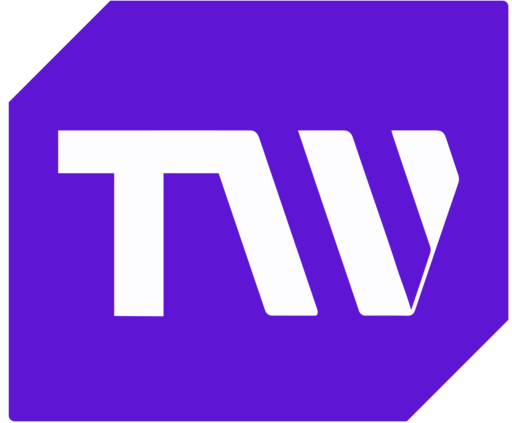Everything You Need To Know About Tokenized Real Estate
Blockchain technology is making significant strides in various aspects of life, and the real estate industry is no exception. This is evident through the development of dedicated and decentralized real estate marketplaces such as Propy and Ubitquity.
A new trend making waves is the emergence of tokenized real estate, which promises to transform the way users buy, sell, earn, and invest in real estate properties.
What Is Tokenized Real Estate?
Source: https://www.metawealth.co/post/how-to-tokenize-real-estate
Tokenized Real Estate is the representation of real estate properties and their cash flows as blockchain tokens. It is a new method of digital ownership, and it involves using blockchain technology to convert real-estate assets into either fungible or non-fungible tokens (NFTs).
Choosing to tokenize real estate into NFTs or fungible tokens largely depends on the exact asset being tokenized and the purpose of tokenizing the asset. NFT Tokenization works best for properties that are represented as a whole, meaning that one token will represent one physical asset. On the other hand, fungible tokens work best when dividing ownership of an asset into different parts. In this case, one property’s value can be divided into multiple tokens.
NFT Tokens are set up so that the owner of one such token still retains all the rights and obligations associated with the underlying property. These details are written into the smart contracts, which are then stored on the blockchain. Smart contracts are also programmed to self-execute in reaction to a pre-determined condition, such as automatically transferring an asset after a sale without human interference. It can also validate the transaction by itself and create a new block to add to the blockchain.
How Does Tokenized Real Estate Work?
Real estate tokenization depends on three main factors revolving around the property itself. First is the token issuer, who is responsible for creating and managing tokens. It could be the property’s owner, a real estate investment trust (REIT), or any dedicated tokenization platform. The remaining stakeholders include the investors who will buy the assets, and the smart contracts that manage the transfer of ownership.
The tokenization process starts with selecting the most appealing assets (i.e properties with high investment potential). After choosing the most suitable asset(s), property owners will create a special-purpose investment vehicle (SPV) to manage it throughout the sales process as most other offerings do.
Afterward, the property owner has to select a platform that can help them convert and mint digital tokens for the property. The token’s underlying data will contain information like transaction rules, the property’s value, etc. They can also include royalties, so owners can earn percentages if the property is sold in the future. This will enable the token issuer to mint any specific number of tokens that will typically either represent proportional ownership or full rights over the asset.
A secure smart contract is then developed to define the rules governing ownership, distribution, and investor rights while also ensuring compliance with regulatory requirements. The property owner can use the autonomy of the smart contracts to set parameters on who has access to what part of the property (or associated token), the transaction process, or any other legal or privacy rules.
Property owners must also consider all the relevant laws and regulations, such as security laws and anti-money laundering regulations. Most real estate offerings use SPVs, usually set up as limited liability companies (LLCs) to safely invest in real estate.
At this point, the token can be released to the investors, who now own parts of the share of the real estate asset. A secondary marketplace can also be created, allowing investors to buy and sell their tokens.
Step-By-Step Tokenization Process
Several blockchain projects provide real estate tokenization for users. Popular platforms include Kaleido, Propy, BlockchainX, RealT, Roofstock, and Synodus. While these platforms use similar methods of tokenization, this section will specifically focus on Kaleido’s tokenization process.
Every tokenization process begins with a blockchain connection. For this example, we will be using Avalanche testnet, which provides a secure testing environment without the need for real assets. You should then connect the Kaleido platform to the testnet via this link. Once connected, you can adjust advanced settings like gas management and transaction processing details.
Source: https://www.kaleido.io/blockchain-blog/how-to-tokenize-an-asset
The next step is to link your Kaleido deployment (the account you connected to Avalanche) to an Inter Planetary File System (IPFS). The IPFS is an alternative network for storing and sharing files. As such, you can use an IPFS provided by Kaleido or connect to a public IPFS using their associated API and Gateway URL.
After these steps are completed, you can then connect a wallet. You may be prompted to add a new wallet key as well. This guide will add two, one called “test’ and the other called “receivenft”. Add the wallet address for the “test” key in the Avalanche Fuji Faucet, and then add some testnet tokens that will enable you to conduct your transactions.
Source: https://www.kaleido.io/blockchain-blog/how-to-tokenize-an-asset
After confirming that the wallet and blockchain are connected properly, you can begin tokenization properly. Go to the “Build” section on Kaleido to create a smart contract. Afterward, select the ERC-token template you want to use, configure the rest of the smart contract, and then select or create a path for where you want to deploy the smart contract.
Source: https://www.kaleido.io/blockchain-blog/how-to-tokenize-an-asset
Your wallet must have enough funds to deploy the smart contract to the namespace you created earlier. After that, the platform will notify you once the deployment is successful. Finally, create a token pool linked to your deployed smart contract. This pool will manage the minted tokens and keep track of their details.
By the end of this process, you should have successfully tokenized your chosen asset, using blockchain technology to represent ownership in a digital format.
Source: https://www.kaleido.io/blockchain-blog/how-to-tokenize-an-asset
Features of Tokenized Real Estate
Key features of tokenized real estate include:
Tokenized Real Estate Cash Flows
This approach provides extra liquidity for property owners, as they can also tokenize the cash flows that a property generates. Cash flows can be determined by removing the property’s operating costs, such as mortgage, taxes, insurance, and other utilities from the property’s rental income. The rights to this cash flow can be represented as NFTs, and property owners can further split ownership of their properties from the cash flow they generate. This allows them to sell the right to that rental income to someone else for a specified period. By tokenizing the cash flow linked to real estate, property owners also gain access to more flexible financial options and can reduce their overall financing costs related to real estate investments.
Full Ownership Of Assets
Some tokenized real estate assets offer full ownership of property by representing individual real estate assets as single, unique NFTs (non-fungible tokens). As such, each NFT differs from others on the blockchain, indicating the uniqueness of every property. Owning such an NFT is the same thing as owning the property itself, so transferring the NFT signifies a change in ownership.
Additionally, these tokens can contain vital information such as historical sales data, ownership documents and property addresses. This method simplifies the buying and selling process, allowing transactions to occur on NFT marketplaces with just a few clicks, drastically reducing the time it usually takes to complete traditional real estate deals.
Use of Dynamic NFTs
Tokenization can be further improved by converting properties into dynamic NFTs. These NFTs can automatically update their data under specific conditions, such as a roof replacement. As such, dynamic NFTs allow for better information exchange between counterparties. An NFT can contain different pictures and videos of a particular property, highlighting its current state. If it is sold to another person later on, more media can be added, giving buyers a more comprehensive outlook on the property they want to buy.
Fractionalized Real Estate
Fractional ownership of real estate involves dividing ownership over a property among multiple people. As such, having all fungible tokens associated with the property grants full ownership of the property.
Depending on how they are structured, using fractionalized real-estate tokens can encourage more investors to build custom portfolios with different assets. It can also allow prospective buyers to take smaller steps to build or own their desired property.
Smart Contract Management
Typical real estate transactions feature several manual processes before a transaction can be completed. These include inspections, negotiations after the inspections, and escrows. Involving smart contracts adds a layer of automation to these procedures by keeping digital records of these processes.
Additionally, smart contracts can facilitate the transfer of assets. The logic behind this level of automation can be executed through the transferFrom and approve functions, and they are compatible with popular token standards like ERC-20 and ERC-721.
However, due to the complex legal and regulatory nature of real estate transactions, other security token offering (STO) frameworks like ERC-1400 and EERC-3643 were developed to ease the management of tokenized assets. They also provide additional features to ensure that all parties comply with relevant laws and regulations, like KYC and anti-money laundering requirements.
Benefits of Tokenized Real Estate
Several benefits of tokenized real estate include:
Increased Transparency and Efficiency
Using blockchain technology facilitates immutable and transparent transactions. This makes them an ideal solution for handling real estate, as its decentralized structure serves as a good alternative solution to complex acquirement procedures. Tokenizing real estate also reduces the long list of key stakeholders to just three- the property owner (seller), the prospective buyer and the platform used for tokenization.
The use of smart contracts also increases automation, thus reducing the need to interact with so many people to acquire an asset. It also eliminates paperwork and reduces unnecessary waiting times for a transaction to be completed.
Better Liquidity
Fractionalizing the value of a property during tokenization also boosts liquidity. This is because tokenization allows owners to sell bits of their property quicker, while buyers can acquire assets little by little, as opposed to the traditional method of buying a property all at once, or making significant payments over short periods.
Better Opportunities for Small-Scale Investors
Typically, investing in real estate has been considered an option for the more affluent people. Real estate prices often deter people from investing especially if they don’t have major financial backing. Tokenization, however, has made it possible for small-scale investors to invest in real estate as well.
Less Counterparty Risk
Longer transaction chains can be difficult to trace. This was a bigger issue in the traditional era of selling real estate, where third parties reduced transparency with their involvement. However, using blockchain technology (smart contracts in particular) improves transparency from a regulatory perspective. It minimizes human interaction, shortens the chain of transaction, and reduces the risks associated with counterparty involvement.
Better Price Discovery
Fractionalized real-estate tokens can improve the process of determining fair-market prices for various real-estate assets. Currently, real-estate professionals depend on different types of data points to get an accurate estimate for a property’s price. On the other hand, sellers can also receive different types of offers if they put up their property for sale. As such, price ranges can vary depending on the expert. Thus, if properties are fractionalized, sellers can easily analyze the value at which buyers are willing to acquire bits of the property. This in turn will give a better picture of the overall market value of the entire property.
Lower Costs
Tokenized real estate offers a new way to simplify the processes involved in buying and selling properties, even though it doesn’t change the actual cost of real estate itself. Tokens use smart contracts to define the terms of transfer and can also carry out transactions directly once completed. This creates a more efficient and less expensive method for coordinating tasks among various parties, such as mortgage lenders, notaries, and escrow companies. As a result, real estate transactions can be completed more smoothly and with greater trust.
Challenges Facing Real Estate Tokenization
Challenges include:
Data Authentication and Verification
Real estate tokenization requires property owners to ensure that every piece of information about the property is relevant and accurate. These include information such as the property’s location, compliance, property titles and ownership documents. If these documents are later found to be fake or incomplete, it may lead to legal disputes, and loss of trust.
Having accurate and reliable data is crucial to closing real estate transactions, as it gives key insights into the state of the property. This will give buyers enough background about the property, answering questions like when it was built, the average rental price, if any renovations have been made, the current state of the property and any other relevant information.
Complex Licensing Requirements
Real estate assets can only be tokenized on licensed platforms that provide regulation for the operation and management of security token offerings (STOs). Getting this license is no easy feat, as these platforms must undergo a series of rigorous and periodic evaluations to ensure compliance with the regulations.
Regulatory Issues
Many individuals working in regulatory authorities, as well as those in the real estate sector, don’t really know how blockchain technology works. This creates a knowledge gap, leading to a regulatory environment that creates needless obstacles for everyone involved. As a result, investors will lose trust in the system, in turn holding back the sector’s growth.
Wallet Recovery
Buying a tokenized house would grant you an NFT-based house deed that you can store in your wallet. This is a secure way to manage your assets since you are the only person that can access it. However, in the event that you lose or forget your wallet password, there is no other way to access that house deed, meaning that you consequently lose ownership of the house.
This is a major challenge as it is currently difficult to connect the digital asset and the physical property they represent This will make it even more difficult to determine who really owns a certain asset in the event of fraud or losing your password.
A good solution is to partner with a centralized entity like a government agency to reissue another NFT as a replacement for a missing house deed, similar to the same process if you lose your physical house deed.
Conclusion
The concept of tokenization is still fairly new, and might take a little while before it scales across different blockchains and networks. However, it holds a lot of potential, and if implemented successfully, it has the capacity to completely transform the way we trade real estate. Nonetheless, it goes without saying that the blockchain industry is very volatile, so everyone is encouraged to do their due diligence before investing in tokenized real estate.


